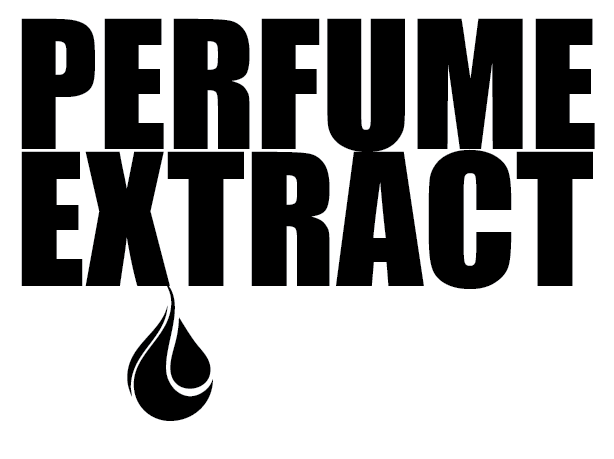Fragrance, Perfume Making
Simple Guide to Making Perfume
Simple Guide to Making Perfume
Perfume Making Guide: Crafting Your Own Signature Scent
Making your own perfume can be a fun and creative process. Whether you’re interested in creating a signature scent or just experimenting with fragrances, here’s a step-by-step simple guide to making perfume to help you create your own unique perfume.
What You’ll Need
- Aroma Chemicals, Essential Oils & Fragrance Oils: These are the primary ingredients for perfume. You’ll need different types of oils to create the base, middle, and top notes:
- Base Notes: The heavier, long-lasting scents (e.g., sandalwood, vanilla, musk, amber).
- Middle Notes: The heart of the perfume, which emerge after the top notes fade (e.g., rose, jasmine, lavender, geranium).
- Top Notes: The light, initial scents that give your perfume its first impression (e.g., citrus, bergamot, mint, eucalyptus).
- Carrier Oil or Alcohol: This is the base liquid for your perfume. You can choose:
- Alcohol (Ethanol): For a traditional, more concentrated perfume. If you’re using alcohol, opt for perfumer’s alcohol or a high-proof vodka.
- Carrier Oil: If you prefer oil-based perfumes, use a neutral carrier oil like jojoba, fractionated coconut oil, or grapeseed oil.
- Perfume Bottle: A small bottle with a tight-sealing cap or spray nozzle. You can find these at craft stores or buy these online here.
- Pipettes or Droppers: For measuring and adding your aroma materials and essential oils with precision.
- Blending Jar: A small glass container to mix the oils before transferring to your perfume bottle.
- Optional:
- Fixatives: These help the scent last longer. Natural fixatives like benzoin or frankincense are commonly used.
- Distilled Water: If you prefer a lighter fragrance, you can add a bit of water to dilute the alcohol-based perfume or use the final fragrance compound at a higher dilution ratio.
A simple guide to making perfume – A Step-by-Step Guide
1. Decide on Your Perfume Notes
Start by selecting which notes you want to use. A balanced perfume has a mix of top, middle, and base notes. Here’s a simple guide for inspiration:
- Citrus (Top Notes): Lemon, lime, orange, grapefruit, bergamot.
- Florals (Middle Notes): Rose, lavender, jasmine, geranium, ylang-ylang, lily of the valley.
- Earthy (Base Notes): Sandalwood, patchouli, vetiver, vanilla, amber, musk.
- Fruity: Fresh, tangy, and sweet (e.g., peach, raspberry, citrus)
- Woody: Earthy, warm, and grounding (e.g., sandalwood, cedarwood, vetiver)
- Oriental: Rich, spicy, and exotic (e.g., vanilla, amber, patchouli)
- Aquatic/Fresh: Light, clean, and airy (e.g., ozone, sea breeze)
- Spicy: Warm, spicy, and aromatic (e.g., cinnamon, cardamom, clove)
You could create a fresh, light perfume using citrus and floral notes, or go for something deep and spicy with woods and amber.
2. Choose Your Perfume’s Ratio (The Pyramid)
A fragrance is typically composed of three layers or “notes”:
- Top Notes: These are the first scents you smell when you apply perfume. They tend to be lighter and more volatile, lasting around 10-15 minutes. Example molecules: Limonene, Linalool, Citral.
- Middle Notes (Heart Notes): These develop after the top notes evaporate and form the core of the fragrance. They tend to last longer, around 2-3 hours. Example molecules: Hedione, Iso E Super, Geraniol.
- Base Notes: These are the foundation of the perfume and provide depth. They last the longest, often staying on skin for hours. Example molecules: Vanillin, Musk Ketone, Amber, Sandalwood molecules.
Perfumes used to generally follow a 3:2:1 ratio, but since the gaining popularity of aroma chemicals, the ratio of notes now varies incredibly, but this might be a good starting point for a beginner when first starting out:
- Top Notes: 50%
- Middle Notes: 30%
- Base Notes: 20%
This creates a well-rounded, layered fragrance where the top notes provide an initial burst, the middle notes define the heart, and the base notes leave a lingering, lasting scent.
3. Choose your aroma molecules
Aroma molecules are the building blocks of a fragrance. You can combine synthetic and natural molecules to achieve your desired scent profile. Here are some examples:
- Linalool (floral, lavender-like)
- Limonene (citrusy, fresh)
- Iso E Super (woody, velvety, amber-like)
- Vanillin (sweet, vanilla)
- Hedione (jasmine-like, fresh)
- Musk Ketone (musky, clean)
- Cis-3-Hexenol (green, fresh cut grass)
- Cedarwood molecule (woody, dry, slightly balsamic)
- Ethyl Vanillin (strong vanilla, sweeter than vanillin)
- Ambroxan (amber, musky, and woody)
4. Create a Test Blend
Once you’ve selected your molecules, start blending them. A typical perfume formulation involves working with a balance of top, middle, and base notes. Here’s an example:
Example Fragrance:
- Top Notes (Citrusy, Fresh): 15% Limonene (citrus), 5% Linalool (lavender-floral)
- Middle Notes (Floral, Green, Fresh): 30% Hedione (jasmine-like), 10% Cis-3-Hexenol (green, fresh)
- Base Notes (Woody, Musky): 30% Iso E Super (woody, amber-like), 10% Ambroxan (musky, warm), 10% Vanillin (sweet, vanilla)
Alternatively, if you are using essential oils to create your blend, you could try blending in drops:
- Start with Base Notes: Add 2-3 drops of your base note essential oil into a blending jar.
- Add Middle Notes: Add 3-5 drops of middle note oils.
- Add Top Notes: Add 2-3 drops of your top note oils.
Stir or swirl the mixture gently to blend the oils. Smell the mixture after each step to make sure you’re happy with the balance.
5. Blend with Alcohol or Carrier Oil
Once you’re happy with your test blend, it’s time to add your liquid base:
- For Alcohol-Based Perfume: Add your essential oil blend into the perfume bottle. Then, fill the rest of the bottle with alcohol, leaving about 10% empty to allow the scent to breathe. Shake well and let it sit for at least 48 hours, ideally 2–3 weeks, to allow the scents to meld.
- For Oil-Based Perfume: Add your essential oils into the bottle, then top with your carrier oil. Shake to mix. This version won’t last as long as alcohol-based perfume but is gentler on the skin.
6. Age Your Perfume
Allow the perfume to age for 1-3 weeks. The scent will change and mature over time as the oils blend together. During this period, shake the bottle occasionally to encourage the oils to meld.
This is known as maturation, but is also referred to as maceration and helps develop a fuller, more harmonious scent.
7. Final Adjustments
After aging, test your perfume by spraying or dabbing a little on your wrist. If it’s too strong, dilute it with more alcohol or your chosen carrier oil. If it’s too light, add a few more drops of your favorite notes and let it age again.
Tips & Tricks
- Start Small: Make small batches to test your scent before committing to a larger bottle.
- Take Notes: Keep a notebook of the blends you create and the amounts used. This will help you recreate your favorite scents or adjust them in the future.
- Let It Develop: Perfume can smell different right after mixing, so be patient and give it time to mature before making adjustments.
- Layering: Experiment with layering different perfumes or oils. Sometimes, creating a scent you love involves mixing various pre-made perfumes with your own creations.
- Scent Memory: Take note of your favorite scents in everyday life—whether it’s the smell of your favorite flowers, your favorite candle, or even a special memory—and try to incorporate these smells into your perfume.
Ideas for Creating Simple Scents
Here are a few easy-to-create perfume combinations to get you started:
- Citrus Bloom (Fresh & Light)
- 5 drops of lemon (Top)
- 4 drops of lavender (Middle)
- 2 drops of sandalwood (Base)
- Spiced Rose (Warm & Romantic)
- 5 drops of rose (Middle)
- 4 drops of cinnamon (Middle)
- 2 drops of vanilla (Base)
- Woodland Escape (Earthy & Grounding)
- 4 drops of patchouli (Base)
- 3 drops of cedarwood (Base)
- 3 drops of bergamot (Top)
- Tropical Paradise (Sweet & Exotic)
- 4 drops of ylang-ylang (Middle)
- 3 drops of coconut (Base)
- 3 drops of lime (Top)
Idea for Creating a more advanced fragrance
Creed Aventus is one of the most popular and iconic fragrances, and its blend of fruity, smoky, and woody notes has made it a favorite for perfumistas around the globe. While creating an exact replica would be a challenge due to the complexity and high-end ingredients used by Creed, you could put together a formula that draws inspiration from Aventus’ signature scent profile as follows.
Creed Aventus Key Notes:
- Top Notes: Bergamot, Blackcurrant, Apple, Pineapple
- Heart Notes: Patchouli, Jasmine, Rose
- Base Notes: Musk, Oakmoss, Ambergris, Vanilla, Birch
Inspiration Formula for a Perfume Similar to Creed Aventus
Have you ever wondered what materials might be used to create the fabulous Creed Aventus formula? Here we provide a simplified version of a Creed Aventus type formula that should help to evoke the foundations of this iconic fragrance.
Simplified formula to mimic the spirit of Creed Aventus, with approximate proportions:
Top Notes (Fruity & Fresh) – 30%
- Isoamyl Acetate (banana, fruity) – 2%
- Ethyl Butyrate (pineapple, tropical) – 3%
- Allyl Amyl Glycolate (green pineapple) – 5%
- Limonene (citrus, fresh) – 5%
- Sicillian Bergamot Oil (citrus, floral) – 10%
- Blackcurrant Bud Absolute (fruity, green) – 5%
These bright, juicy, and slightly tangy top notes are key to Aventus’ fresh opening. The pineapple and bergamot are particularly important for that signature zest.
Heart Notes (Floral, Woody, Smoky) – 35%
- Phenyl Ethyl Alcohol (rose-like, fresh) – 5%
- Rosessence (rose) – 1%
- Guaiacol (smoky, phenolic) – 3%
- Patchouli Beautiful (earthy) – 2%
- Cedrol Acetate (woody, cedar-like) – 5%
- Iso E Super (woody, soft amber) – 8%
- Dihydro Myrcenol (fresh, citrusy, lavender) – 6%
- Hedione (jasmine, fresh) – 5%
Patchouli, Hedione and Rose add some depth and complexity to the heart.
Base Notes (Woody, Musky, Amber) – 35%
- Ambroxan (ambergris-like, woody) – 15%
- Galaxolide (clean musk) – 5%
- Exaltolide Total (powdery, musky) – 5%
- Vanillin (soft, sweet) – 6%
- Oakmoss Absolute (earthy, woody) – 2%
- Birch Tar Oil (leathery, smoky) – 2%
The base provides longevity and smoothness. Oakmoss and Ambroxan give it that earthy, maritime touch, while Vanillin adds a soft sweetness to balance the sharpness of the top notes. Birch Tar is essential for that smoky, leathery note that Aventus has.
Important Safety Tips
- Patch Test: Always do a patch test with the final perfume on your skin before using it liberally. If you experience any irritation, discontinue use.
- Quality Oils: Use high-quality, pure essential oils to ensure a safe and long-lasting perfume.
- Avoid Direct Sun Exposure: Keep your perfume in a cool, dark place to maintain its quality and longevity.
Conclusion
We hope that you have found our simple guide to making perfume useful.
Making your own perfume is a creative and rewarding process that allows you to express your personality through scent.
Whether you’re designing a fresh floral fragrance or a deep, musky blend, crafting your own perfume offers endless possibilities.
Don’t be afraid to experiment and trust your nose—creating a signature scent is all about personal expression and the joy of discovery.
Happy blending!

